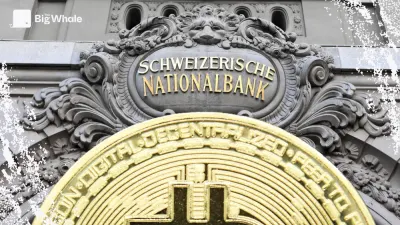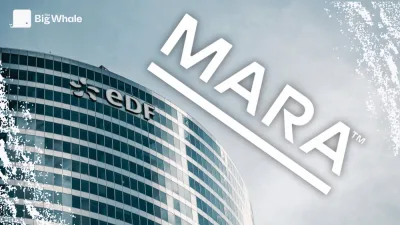TBW - Airdrop Eclipse: our advice on how to qualify

With Ethereum's layer 2s multiplying, it's getting harder and harder for a new entrant to emerge and manage to attract users and an ecosystem of applications. Eclipse seems determined to stand out from points campaigns simply based on the value deposited by users and has a rather innovative ecosystem launch strategy.
>> Read our fundamental analysis of Eclipse
Most layer 2s experience a sudden decline in activity once they have completed their airdrop. Promises of new airdrops or the distribution of incentives can limit this phenomenon, but the best solution remains to offer a truly attractive ecosystem of applications. For example, Base insists that there will never be any airdrops, but manages to be one of the biggest layers 2 thanks to its ability to attract apps that are actually used.
Eclipse also has a points campaign, but this is part of a wider strategy that aims to consolidate a community of users and not just favour those with the greatest financial capabilities.
After Scool Club: An NFT collection at the heart of the community
Very shortly after the launch of its mainnet, Eclipse launched the sale of 10,000 NFTs from its ASC collection with a selling price of 0.04 ETH per NFT. The entire collection sold out within minutes of its launch.
Alucard is the community manager on the Eclipse team and is also the co-founder of the ASC collection. The fact that a channel's development team launches its own NFT collection is a strong bias against the neutrality of its ecosystem, especially as all members of the Eclipse team display an ASC on their profile photos. The Eclipse team takes this bias in order to encourage the emergence of a community through the NFT collection that it has developed and promotes.
ASC owners thus have a special role in the Eclipse discord and enjoy various advantages within the ecosystem. It seems quite likely that owning an ASC NFT could be a criterion for Eclipse's future airdrop, which has propelled the collection's floor price to more than 0.5 ETH.
Another important Eclipse NFT community is Validators, which has 3,333 NFTs. This is the first collection launched on the network. The project team also launched Laika, the network's first memecoin, as well as blips: a way of sending messages through NFTs on Eclipse.
Turbo Tap: an innovative points system
After launching ASCs, the team quickly set up Turbo Tap, a site where players click on Turbo to earn points. Each click corresponds to a transaction on the network with almost imperceptible fees.
The first people who were able to start clicking were members with the OG role on the Eclipse Discord (the latter is still accessible to active participants) as well as ASC owners.
After a few weeks, new ways of accumulating points were introduced: assets held in wallets as well as TVL deposited in blockchain protocols allow points to be accumulated passively, which is similar to traditional points systems.
Recently, point boosts have been introduced to the site: these can be obtained by performing various actions on the ecosystem's applications, which allows the team to highlight the ecosystem.
The team has made it clear that the use of autoclickers is prohibited and that addresses that use them will be disqualified from any rewards if they are noticed.
It is highly likely that Turbo Tap points will be a major criterion for the upcoming airdrop.
Moo Games: a large-scale competition on the blockchain
The project recently announced the Moo Games where over $500,000 will be distributed, mainly between the 3 people on the podium. To take part, you had to buy a $50 NFT and hold it in your wallet during the snapshot on 2 February, with more than 11,400 players signed up.
The Moo Games are divided into 4 games that will take place one after the other: Dev Will Rug, Group Think, Average Minds and Death Race. We don't have any more information about them other than to say that they will take place at the beginning of February. The Moo Games are therefore a new initiative that aims to unite the Eclipse community around a common event.
The Eclipse ecosystem
Eclipse is the first popular blockchain other than Solana to use the Solana Virtual Machine (SVM). Unlike the Ethereum Virtual Machine (EVM) ecosystem, SVM-enabled applications are less accustomed to deploying across multiple chains. As a result, Eclipse currently finds itself with a fairly limited ecosystem.
Eclipse's main DEX is Orca, which is also present on Solana. Invariant is in second place and specialises in concentrated liquidity, the protocol is currently running a points campaign.
Save, formerly Solend, is the leading lending protocol on Eclipse, closely followed by Astrol, Eclipse's native lending protocol.
Neptune is another native Eclipse application and is the issuer of USDC: a decentralised stablecoin. The protocol organised a public sale of its native token, the NPT, through a sale of NFTs, which met with fairly mixed success as only a third of the NFTs were sold.
Sandglass is a yield trading protocol quite similar to Pendle. For the time being, it is only possible to trade the yield of tETH on it. TETH is issued by Nucleus and is backed by several liquid restaking tokens (eETH, ezETH, rswETH, steakETH and pufETH).
Scope is the marketplace where Eclipse's NFT collections are launched and traded.
Fight Horse is Eclipse's main memecoin launchpad.
The gaming sector is not very developed, at the moment there are Sendarcade and StakEm, which offer fairly basic games.
The Big Whale's opinion
Eclipse's potential is quite promising, the team knows how to rally the community around engaging initiatives such as CSAs, turbo tap or Moo Games. Although the blockchain is new, a fairly tight-knit community seems to have formed, so it remains to be seen how it will evolve once the airdrop has passed.
On the other hand, the Eclipse ecosystem is still very poor, which can be explained by the fact that it is one of the first SVM-based blockchains other than Solana, especially as its mainnet was launched just 3 months ago. For all that, we might have hoped for more native applications at launch since the current native applications (Neptune and Astrol) don't offer any particular innovations.
The best way to gain exposure to Eclipse's success seems to be to accumulate turbo tap points and participate in the project's various initiatives. Depending on the capital available, you have to adapt between providing liquidity on Eclipse's applications or simply clicking, although this surely takes too long to be really profitable.



